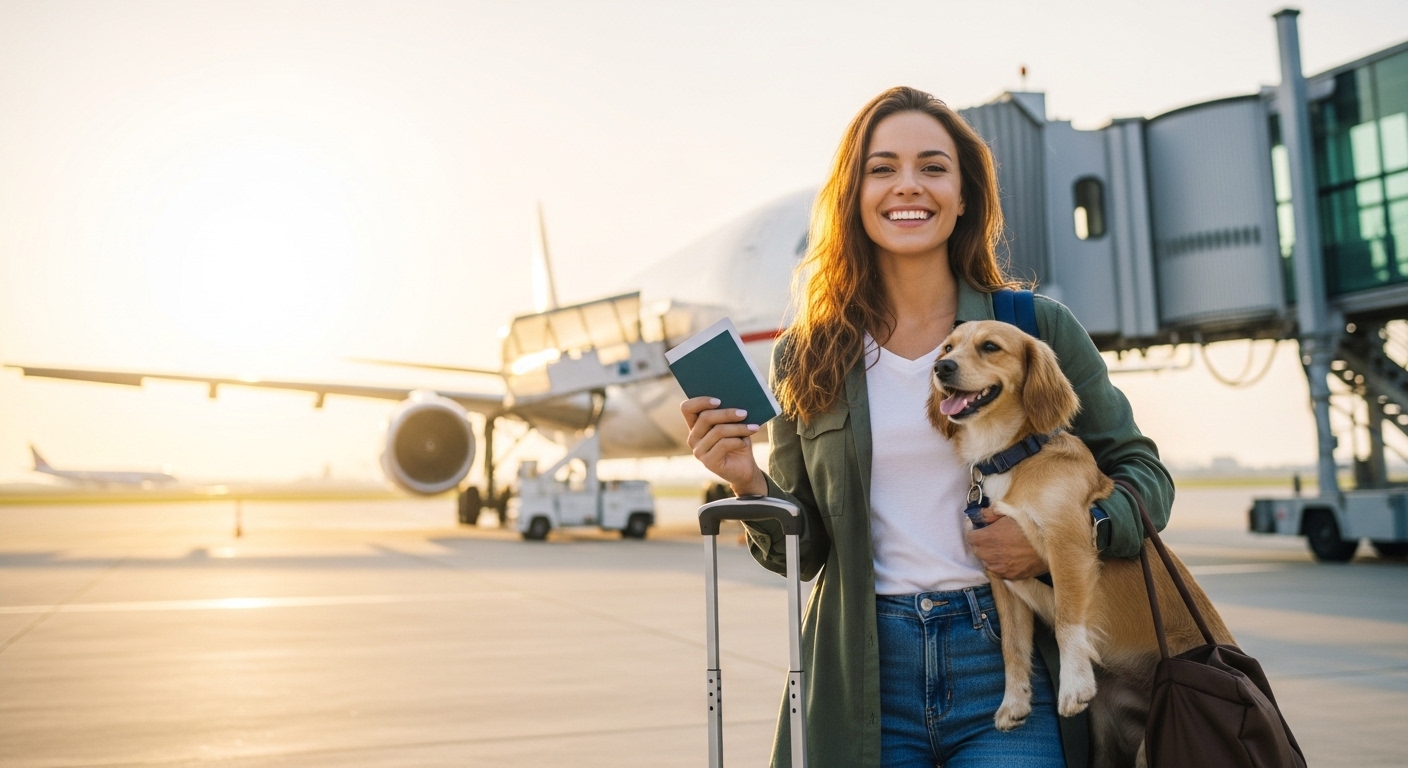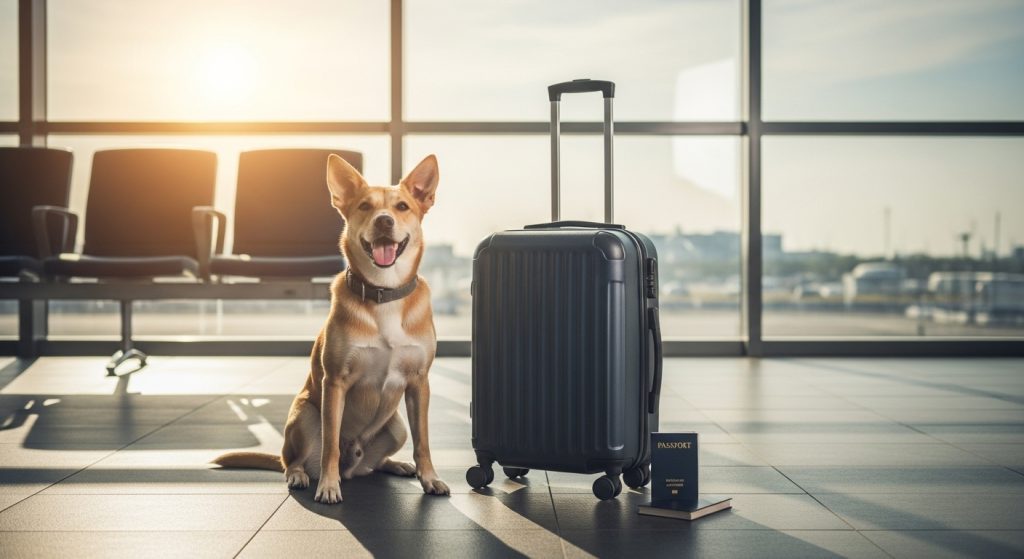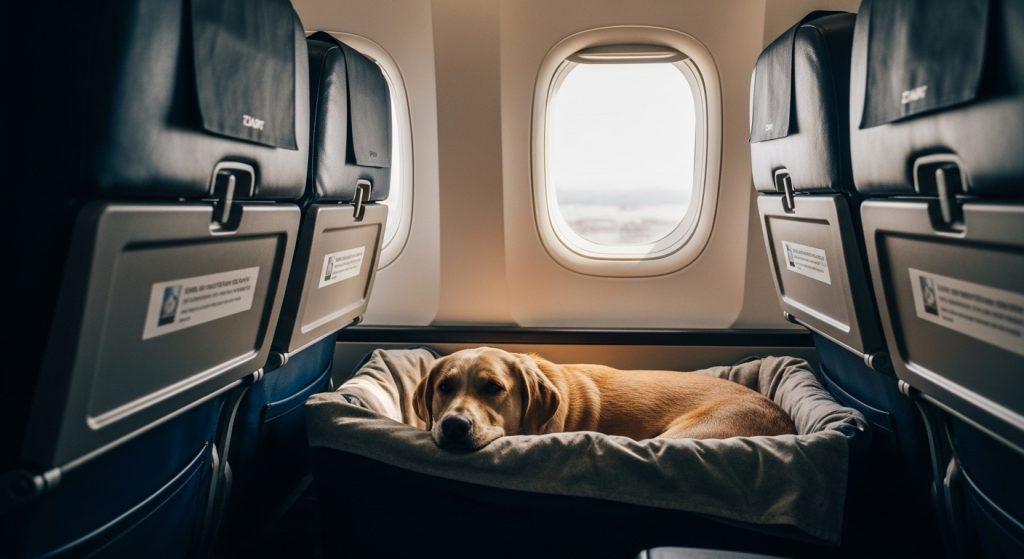Traveling internationally with your dog is no longer a dream reserved for the brave few—it’s an achievable adventure with the right preparation. Whether you’re planning a short European getaway or relocating overseas, ensuring your furry friend’s comfort and safety is key.
Before you start packing those doggy treats, it’s essential to understand that international pet travel involves documentation, vaccinations, and country-specific regulations. Missing even one requirement could result in delays—or worse, quarantine for your pet.
So, how do you make sure everything goes smoothly? Let’s dive into the key steps for stress-free international dog travel.
Step One: Research Destination Requirements
Every country has its own rules for bringing animals across the border. Some nations like the UK, Japan, and Australia have strict quarantine laws, while others like France or Canada are relatively pet-friendly.
Here’s how to prepare efficiently:
-
Check government websites: Always start with your destination country’s official veterinary or agricultural authority.
-
Look for pet import guidelines: Focus on details such as required vaccinations, parasite treatments, and microchip standards.
-
Start early: Begin preparations at least 3–6 months before travel to ensure enough time for vaccines and documentation.
Pro Tip:
Countries with rabies-free status (like New Zealand) often require serologic testing and long waiting periods. It’s best to consult your vet early!
Step Two: Visit Your Veterinarian
Your vet will be your best travel advisor. Schedule an appointment to discuss your destination’s health regulations and your dog’s needs.
Your vet can:
-
Update vaccinations (rabies, DHPP, leptospirosis).
-
Provide a microchip compatible with ISO 11784/11785 standards.
-
Issue an International Health Certificate (APHIS 7001) or EU Pet Passport.
Also, talk about motion sickness medication or calming aids for long flights. Not all dogs handle travel the same way, so personalized advice matters.
Step Three: Get a Pet Passport or Health Certificate
Depending on your destination, you’ll need one of two main travel documents:
-
EU Pet Passport: If traveling within or to the European Union.
-
International Health Certificate: For non-EU destinations, signed by a licensed veterinarian and endorsed by your country’s official animal health authority.
Keep copies of:
-
Vaccine records
-
Rabies titer test results
-
Proof of microchipping
-
Travel itinerary
These documents are your pet’s ticket to cross borders safely!
Mid-Journey Essentials: Making Air Travel Dog-Friendly
Flying with a dog can sound intimidating, but with smart preparation, your pup can travel in comfort and safety.
Let’s look at how to make air travel less stressful for both of you.
Step One: Choose the Right Airline
Not all airlines are equally pet-friendly. Some have excellent pet care programs, while others have restrictions.
When booking, ask about:
-
Cabin vs. Cargo travel: Small dogs may travel in-cabin, while larger ones go in pressurized cargo areas.
-
Breed restrictions: Snub-nosed breeds like Pugs or Bulldogs are often banned due to breathing risks.
-
Temperature limits: Airlines suspend pet cargo travel during extreme weather.
Recommended airlines for pet travel include KLM, Lufthansa, Air France, and Delta.
Step Two: Prepare the Right Crate
The crate is more than a travel box—it’s your dog’s temporary home. Follow IATA (International Air Transport Association) standards:
-
Spacious enough for your dog to stand, turn, and lie down comfortably.
-
Equipped with ventilation holes on all sides.
-
Labeled with “Live Animal” stickers, and your contact details.
-
Include a soft blanket, chew toy, and an absorbent pad.
Pro Tip:
Familiarize your dog with the crate 2–3 weeks before travel. Practice short stays and reward calm behavior.
Step Three: Feeding and Hydration
Avoid feeding your dog a full meal right before flying. Instead:
-
Feed 4–6 hours before departure to prevent nausea.
-
Provide small sips of water before and after the flight.
-
Use a spill-proof water bowl inside the crate.
If your journey involves layovers, confirm whether your dog can be walked or cared for by airport staff during transfer.
Step Four: Keep Calm and Communicate
Dogs pick up on human anxiety easily. Stay calm and confident.
-
Use a familiar blanket with your scent for comfort.
-
Play gentle music before takeoff if allowed.
-
Avoid sedatives unless prescribed by a vet—they can interfere with breathing.
Arrival and Beyond: Adjusting to a New Environment
You’ve landed! But your adventure isn’t over yet. Helping your dog adapt smoothly to a new environment ensures lasting comfort and safety.
Step One: Go Through Customs Confidently
Once you arrive, proceed to the Animal Inspection Area if required. Present:
-
Health certificate
-
Vaccination documents
-
Import permit (if applicable)
Officials may inspect your dog briefly to confirm identification and health status.
Pro Tip:
Keep digital copies of all paperwork on your phone or cloud storage. Lost documents can delay customs clearance.
Step Two: Acclimate Gradually
Dogs thrive on routine. When you reach your accommodation:
-
Unpack your dog’s familiar items (bed, toys, food bowls).
-
Take short walks near your new area to explore safely.
-
Stick to consistent feeding and play schedules.
If your dog shows signs of stress (whining, pacing, loss of appetite), give them time. Patience and gentle reassurance work wonders.
Step Three: Explore Pet-Friendly Spots
Now for the fun part—discovering dog-friendly places!
-
Search for local parks, beaches, and cafés that welcome pets.
-
Use apps like BringFido or AllTrails to find verified pet spots.
-
Respect local leash laws and clean-up rules to set a good example.
Traveling internationally with your dog opens doors to new experiences, friendships, and memories that last a lifetime.
Traveling internationally with your dog safely is all about planning, preparation, and patience.
From securing the right documentation to managing air travel and adapting to new surroundings, each step strengthens your bond and builds trust.
Remember, your furry companion isn’t just along for the ride—they’re part of the journey. With the right care, every destination can feel like home.




